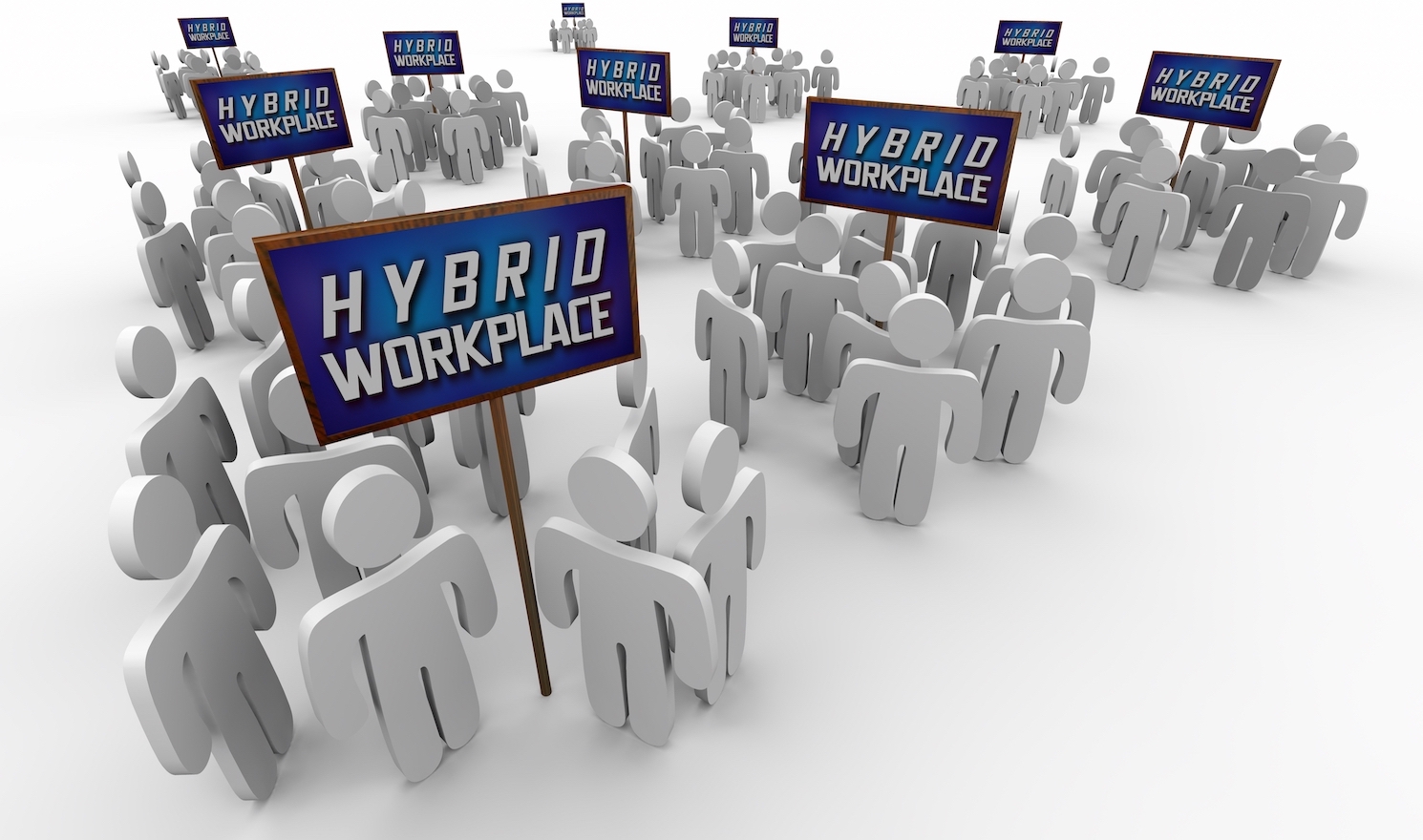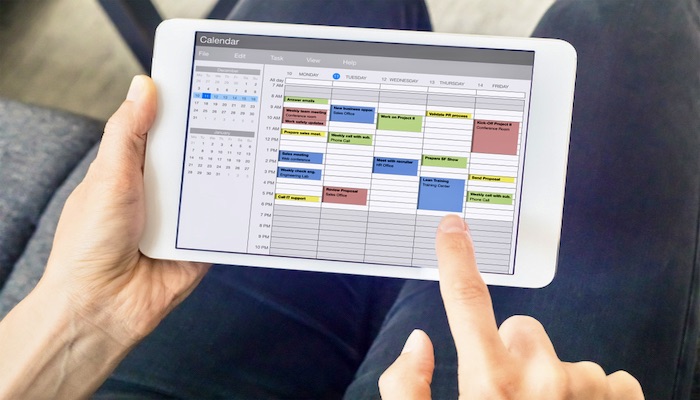
How to succeed in the new hybrid workplace model
Moving to a hybrid workplace model is no longer a niche trend. It’s a movement that’s happening worldwide, and (especially for young people) it seems to be the next big workplace evolution.
It’s crucial that employers and workers alike understand how to make hybrid workspaces a success. In this post, we’ll cover several key tips to follow so that you can succeed as a manager or team member in a hybrid workspace.
11 tips for a successful hybrid workplace model
1. Get comfortable with technology

The first and perhaps most obvious thing that everyone shifting to a hybrid workspace will need to do is get comfortable with technology. In many ways, technology is the backbone of the hybrid workspace. It’s what enables communication between different locations, collaboration on projects in real-time, and the ability to bring your work with you regardless of where you are.
Not only should you be comfortable with this, but you’ll want to be comfortable adapting to and learning new technology regularly, too. At a moment’s notice, you should be able to quickly pick up a new app, messenger, or cloud storage system. Brushing up on your tech skills will make managers more agile and workers more valuable.
2. Embrace the cloud
The key technology enabling the hybrid workplace model is the cloud. It sits behind every SaaS app, makes over-the-air file-sharing simple, and is a secure way to stay connected whether your team is in the office or at home.
So, embrace it! Embracing the cloud doesn’t mean moving a few documents to Google Docs or adding OneDrive to your workflow. Spend time migrating each of your processes to a cloud-based service. Take advantage of tools like Airtable and Trello. Or use modular SaaS applications that can supplement or replace your legacy systems. The more you can work in the cloud, the easier hybrid working will be.
3. Find a routine
When you’re new to a hybrid working model, it can be hard to set a new routine. Contrary to what you might at first think, a hybrid schedule is not the time to throw your existing regimen to the wind.
If anything, it’s when you should be doubling down on your schedule. Many people find it easier to be distracted, fall behind, and maintain healthy work-life boundaries when working a hybrid schedule. And it’s easy to see why — the boundaries between these aspects of your life (which used to be distinct) quickly begin to blur.
A routine will help you stay productive and happy while embracing a hybrid work lifestyle.
4. Don’t forget to take breaks

Our fourth tip for taking on hybrid work is to take breaks. While it may sound counterintuitive to the previous point, they go hand-in-hand.
Working at home means you can work for 15 hours in a row just as easily as you can work two. This can lead to some nasty side effects like disorganization and burnout.
To prevent burnout and overworking, schedule breaks at home just like you would at work. Or, if you prefer to keep things flexible, have a certain amount of time you plan to spend in breaks and take them as and when you need them.
5. Stay in touch
When you’re not in the office, part of the hybrid workplace transition that can take some getting used to is staying in touch with your coworkers and managers. But it’s a crucial aspect of adapting.
Fortunately, there are plenty of tools available to make staying in touch with your team easy. Everything from group email services to Slack will help close the distance between your home office and the workplace you share with your team.
The most important thing with communication (aside from actually communicating) is being available. Make sure that each person on your team can reach you whenever they need.
6. But maintain your boundaries
Being available, however, doesn’t mean being “always-on.” This is another fast track to burnout. Workers who can’t draw lines for when they will and won’t respond to their teams can feel like they’re never really off the clock.
This can be one of the biggest challenges teams face as they move towards a hybrid workplace model.
To help you cope, set specific times for communication during the workweek and a silent period on weekends. And managers can help by setting strict quiet periods for their teams. That way, everyone is on the same page about when (and when not) to communicate.
7. Be patient
There’s a tendency to view your office workspace as a “serious” space and your home office (if you have one) as a “fun” space. While you don’t necessarily need to make your home office a boring place to work, you shouldn’t completely abandon all aspects of a professional workspace.
In other words, being able to work on the couch in your pajamas doesn’t necessarily mean you should. Having a chair that encourages good posture, a quiet space to improve your focus, and an organized desk will help you stay productive and healthy.
9. Set a schedule that encourages productivity

Your schedule should encourage focus and productivity as much as your workspace.
You’re probably used to entering “work mode” at the office as soon as you step through the door. But at home, getting into the zone might be more challenging. It might not be conducive to productivity, either.
Instead, try to set a hybrid schedule that’s as flexible as your hybrid working model. Try taking frequent breaks, working in spurts, or changing between sitting and standing. And try focusing on specific tasks at home and others at the office, and other unique routine opportunities that a hybrid workflow can offer.
10. Build relationships with your coworkers, online as well as off
Working at home comes more naturally than working in an office for some. But for others, it can be an uncomfortable and isolating experience. If you’re someone who thrives in the social network of your workplace, take measures to bring this connection to your hybrid workflow.
That means staying in touch with coworkers, whether you’re working at home or the office. Ensure that you don’t sacrifice valuable face time while working from your home office.
11. Flexibility should go beyond your hybrid workplace model
That brings us to our final tip: allow flexibility to seep into every aspect of your work. A hybrid workplace model offers a unique level of control over where, how, and when you work.
Learning to balance this flexibility with a routine is the key to making hybrid work an empowering and exciting opportunity.
A hybrid workplace model can be a great space to thrive
By following these tips, you can be sure that your move to a hybrid work model is successful. To support this transition with the right tools, reach out to the team at SmartWay2 today and see how our software can empower your hybrid workflow.


